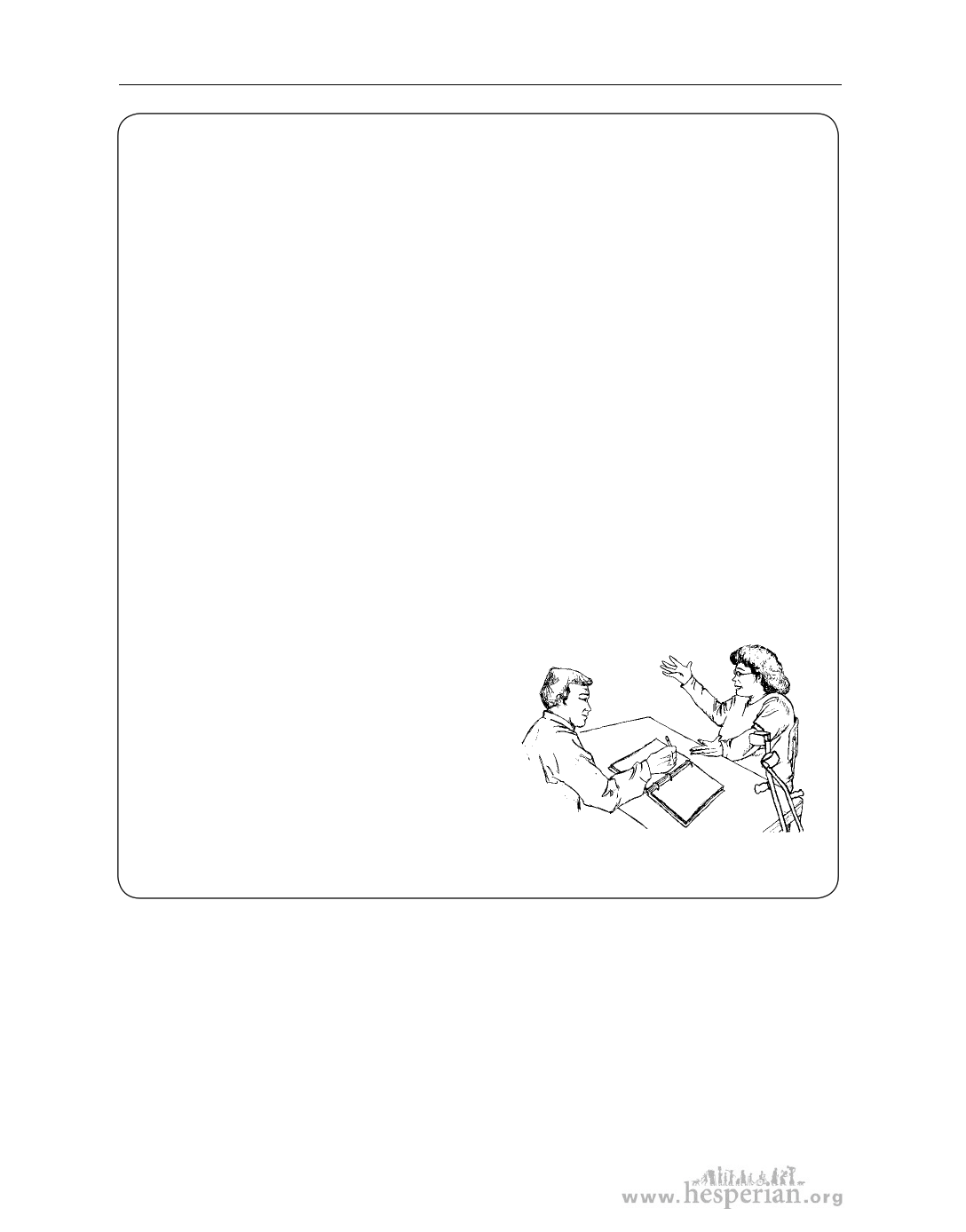
24 chapter 1: Disability and the community
Making access possible
As a child, Alicia Contreras of Mexico became disabled from polio. A wise
therapist counseled Alicia´s parents on the importance of motivating her to
be independent. Her parents arranged for her to attend regular school from
childcare through high school. Alicia was the first student with a disability
in her school, and her success there opened the schoolhouse doors to more
children with disabilities.
Eventually, Alicia went on to university. She had a class on the third floor,
and it wasn’t easy to climb the stairs using crutches. Alicia went to the university
director and asked him to move the class from the third floor to the first. He
agreed right away. “They had another room available,” Alicia recalled. “But the
director had never thought about how students with disabilities would not be
able to get to classrooms on upper floors, and I never thought to ask.” Other
times, Alicia had to fight harder to make changes.
Alicia became a member of a disability association called “Free Access.”
The group believed people with disabilities had the same rights as everybody
else and worked to make the community more accessible. For example, they
discussed with city transportation officials how difficult it was for
people with disabilities to move around the
city. As a result, the city adapted some buses
to make them accessible to people with
physical disabilities.
Free Access is still active today. Since
1993, it has worked with government
officials and non-governmental
organizations to promote changes to
better the lives of people with disabilities.
And there is still so much more to be done!
Changing policies is not easy. It can be long and complicated. It can take many
years and a lot of effort by many people. You must understand the costs, the people
affected, and the politics that affect the conditions you want to change. It is easy
to feel discouraged if you are organizing for change. When you feel overwhelmed
or discouraged, try to seek advice from other women with disabilities elsewhere in
your country, and even outside your country. And remember you have a right to use
all public facilities. You can create an accessible community.
A Health Handbook for Women with Disabilities 2007